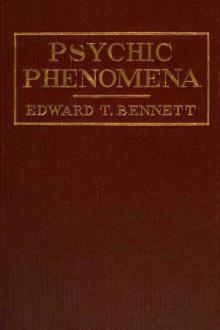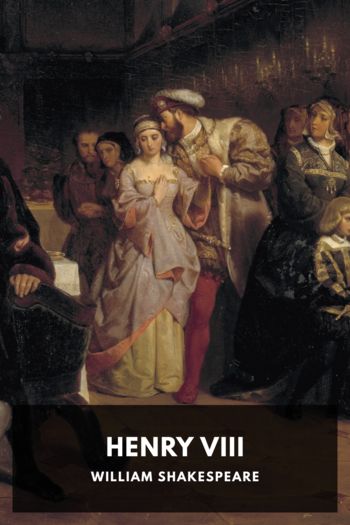Don Quixote by Miguel de Cervantes Saavedra (electric book reader TXT) 📕

Description
Don Quixote is a novel that doesn’t need much introduction. Not only is it widely considered the greatest Spanish literary work of all time, one of the greatest literary works in history, and a cornerstone of the Western literary canon, it’s also considered one of the first—if not the first—modern novels.
This Standard Ebooks edition is believed to be the first ebook edition of Don Quixote to feature a full transcription of translator John Ormsby’s nearly 1,000 footnotes. Ormsby as an annotator deftly explains obscure passages, gives background on the life and times of 1600s Spain, references decisions from other contemporary translators, and doesn’t hold back from sharing his views on the genius—and flaws—of Cervantes’ greatest work.
The story is of the eponymous Don Quixote, a country noble who, in his old age, reads too many chivalric romances and goes mad. After convincing his grubby servant, Sancho Panza, to join him as his squire, he embarks on an absurd and comic quest to do good and right wrongs.
Today Don Quixote’s two volumes are published as a single work, but their publication came ten years apart. Cervantes saw great success with the publication of his first volume, and appeared to have little desire to write a second volume until a different author wrote a spurious, inferior sequel. This kicked Cervantes into gear and he wrote volume two, a more serious and philosophical volume than the largely comic first volume.
Despite being written in 1605 and translated in 1885, Don Quixote contains a surprising amount of slapstick laughs—even for the modern reader—and narrative devices still seen in today’s fiction, including meta-narratives, frame narratives, and metafiction. Many scenes (like Quixote’s attack on the windmills) and characters (like Sancho Panza and Lothario) are so famous that they’re ingrained in our collective culture.
Read free book «Don Quixote by Miguel de Cervantes Saavedra (electric book reader TXT) 📕» - read online or download for free at americanlibrarybooks.com
- Author: Miguel de Cervantes Saavedra
Read book online «Don Quixote by Miguel de Cervantes Saavedra (electric book reader TXT) 📕». Author - Miguel de Cervantes Saavedra
The condemned books are the History of the Deeds of Bernardo del Carpio, by Augustin Alonso of Sahimanca (Toledo, 1585); and the Famous Battle of Roncesvalles by Francisco Garrido de Villena (Valencia, 1555). ↩
Palmerín de Oliva, the founder of the Palmerín Series of Romances, was first printed at Salamanca in 1511. It is said to have been written by a lady of Augustobriga (i.e. Burgos, according to some, but more probably Ciudad Rodrigo), but nothing certain is known of the author. Palmerín de Inglaterra, like Amadís, was until lately supposed to be, as Cervantes supposed it, of Portuguese origin; but the question was settled a few years ago by Vincente Salvá, who discovered a Toledo edition of 1547, twenty years earlier than the Portuguese edition on which the claims of Francisco de Moraes, or of John II, rested. An acrostic gives the name of the author, Luis Hurtado. ↩
Miraguarda is not the name of the Castle, but of the lady who lived in it, and whose charms were the cause of the adventures. ↩
Belianis de Grecia, already mentioned in the first chapter as one of Don Quixote’s special studies. ↩
The “overseas term” was the allowance of time granted in the case of persons beyond the seas, when sued or indicted, to enable them to appear and show cause why judgment should not be given against them. ↩
Tirante el Blanco is the title of the translation into Castilian of the romance of Tirant lo Blanch, first published in Valencian at Valencia in 1490. Joanot Martorell, who is said to have translated it from English into Portuguese and thence into Valencian, was no doubt the author. Only three copies are known to exist, one in the University at Valencia, another in the College of the Sapienza in Rome, and the third in the British Museum. The Castilian version appeared at Valladolid in 1511. Don Pascual de Gayangos is in doubt whether the curate’s eulugy is to be taken as ironical or serious, but rather inclines to the belief that Cervantes meant to praise the book. It would be rash to differ with such an authority, otherwise I should say that the laudation is rather too boisterously expressed and too like the extravagant eulogy of Lo Frasso farther on, to be sincerely meant. ↩
Los Siete Libros de la Diana de Jorge de Montemayor. Impreso en Valencia, 4to. The first edition is undated, and from the dedication appears to have been printed in the author’s lifetime. He died in 1561, in which year the second edition, with additions, appeared. (See this note.) The Diana was the first and best of the Spanish pastoral romances, the taste for which was created by Sannazaro’s Arcadia. The Salamancan was Alonso Pérez, who published a continuation of the Diana at Alcalá de Henares in 1564, but Gil Polo’s, printed the same year at Valencia, has been generally preferred. The pun on Polo and Apolo is not so obvious in English. An excellent English translation of all three by Bartholomew Yong was published in 1598. ↩
The Fortuna d’Amor, por Antonio de lo Frasso, Militar, Sardo, appeared at Barcelona in 1573. In the Viage del Parnaso Cervantes treats the book in the same bantering strain, which misled Pedro de Pineda, one of the editors of Lord Carteret’s Quixote, and induced him to bring out a new edition in 1740. The book is an utterly worthless one, and highly prized by collectors. ↩
The books here referred to are the Pastor de Iberia, by Bernardo de la Vega (Seville, 1591); the Nimphas y Pastores de Henares, by Bernardo González de Bovadilla (Alcalá de Henares, 1587); and the Desengaño de Zelos, by Bartolme Lopes de Enciso (Madrid, 1586). ↩
The Pastor de Filida (Madrid, 1582), one of the best of the pastorals, was by Luis Galvez de Montalvo of Guadalajara, a retainer of the great Mendoza family, and apparently an intimate personal friend of Cervantes, who, under the name of Tirsi, is referred to in the pastoral as a clarissimo ingennio worthy of being mentioned with Ercilla. Montalvo, in return, is introduced under the name of Siralvo into the Galatea of Cervantes, to which he contributed a complimentary sonnet. ↩
Tesoro de varias Poesias, compuesto por Pedro de Padilla (Madrid, 1580). The author is one of those praised by Cervantes in the “Canto de Caliope” in the Galatea. ↩
López de Maldonado, whose Cancionero appeared at Madrid in 1586, is another of the poets praised in the Galatea. ↩
Proverb 26. ↩
The play upon words in the original is “more versed in misfortunes than in verses.” This introduction of himself and his forgotten pastoral is Cervantes all over in its tone of playful stoicism with a certain quiet self-assertion. It shows, moreover, pretty clearly, that until Don Quixote had made the author’s name known, the Galatea had remained unnoticed. ↩
These three are examples of Spanish epic poetry. The Araucana of Ercilla (Madrid, 1569, 1578, 1590) is, next to the Poem of the Cid, the best effort in that direction





Comments (0)